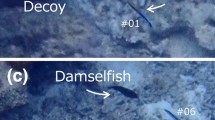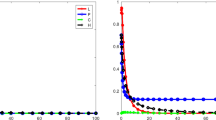Abstract
We saw 79 predatory interactions between a new speciesof monostiliferous, suctorial hoplonemertean and thefiddler crabs Uca musica (77 cases) and U.stenodactylus (2 cases). At an intertidal sand barin the Pacific entrance of the Panama Canal, worms ateabout 0.1% of the adult crab population per day. Themode of attack and the spatial and temporaldistributions of interactions suggest the worm is anambush predator. When struck by a worm‘s sticky,mucous-covered proboscis, crabs produced copious foamfrom their buccal area. Mucous-laden crabs thatescaped, again foamed indicating that the foam maycounteract the mucus. If the attack led to a kill,the struggling crab soon became quiescent, as istypical in other nemertean-prey interactions. Theworm inverted its proboscis, found ingress to thecrab‘s body and fed. Crabs escaped by autotomizingappendages entwined by the proboscis, by forcefullypulling away and by remaining quiescent, then movingaway when the worm inverted its proboscis and beforeit entered the crab. Immobility, a response to visualpredators, may falsely indicate paralysis to the wormand cause it to invert its proboscis, therebyproviding the crab with an opportunity to escape. This predator-prey interaction seems to incorporategeneralized predator tactics and fortuitous preydefenses that give worms and crabs about an evenchance of success.
Similar content being viewed by others
References
Crane, J., 1941. Eastern Pacific expeditions of the New York Zoological Society. XXVI. Crabs of the genus Ucafrom the west coast of Central America. Zoologica, NY 26: 145–208.
Crane, J., 1975. Fiddler crabs of the world (Ocypodidae: genus Uca). Princeton University Press, Princeton (NJ), 736 pp.
Darley, W. M., 1977. Biochemical composition. In D. Werner (ed.), The Biology of Diatoms. Botanical Monographs 13, Blackwell Scientific Publications, Oxford: 198–223.
Endler, J., 1991. Interactions between predator and prey. In J. R. Krebs & N. B. Davies (eds), Behavioural Ecology and Evolutionary Approach, Blackwell Scientific Publications, Oxford: 169–196.
Holmquist, J. G., 1989. Grooming structure and function in some terrestrial Crustacea. In B. E. Felgenhauer, L. Watling & A. B. Thistle (eds), Functional Morphology of Feeding and Grooming in Crustacea, Crustacean Issues, 6. A. A. Balkema, Rotterdam: 95–114.
McDermott, J. J., 1984. The feeding biology of Nipponnemertes pulcher (Johnston) (Hoplonemertea), with some ecological implications. Ophelia 23: 1–21.
McDermott, J. J. & P. Roe, 1985. Food, feeding behavior and feeding ecology of nemerteans. Am. Zool. 25: 113–125.
Morgan, S. G. & J. H. Christy, 1995. Adaptive significance of the timing of larval release by crabs. Am. Nat. 145: 457–479.
Montague, C. L., 1980. A natural history of temperate western Atlantic fiddler crabs (genus Uca) with reference to their impact on the salt marsh. Contrib. mar. Sci. 23: 25–55.
Müller, W., 1989. Acoustical and vibrational communication and ecology of tropical and subtropical fiddler crabs. Zool. Jb. Syst. 116: 47–114.
Roe, P., 1993. Aspects of the biology of Pantinonemertes californiensis, a high intertidal nemertean. Hydrobiologia 266: 29–44.
Thiel, M. & K. Reise, 1993. Interaction of nemertines and their prey on tidal flats. Neth. J. Sea Res. 31: 163–172.
Wolcott, D. L. & N. J. O’Connor, 1992. Herbivory in crabs: Adaptations and ecological considerations. Am. Zool. 32: 370–381.
Zucker, N., 1976. Behavioral rhythms in the fiddler crab Uca terpsichores. In P. J. DeCoursey (ed.), Biological Rhythms in the Marine Environment. University of South Carolina Press, Columbia, SC: 145–159.
Zucker, N., 1978. Monthly reproductive cycles in three sympatric hood-building tropical fiddler crabs (genus Uca). Biol. Bull. 41: 281–286.
Zucker, N., 1981. The role of hood building in defining territories and limiting combat in fiddler crabs. Anim. Behav. 29: 387–395.
Author information
Authors and Affiliations
Rights and permissions
About this article
Cite this article
Christy, J.H., Goshima, S., Backwell, P.R.Y. et al. Nemertean predation on the tropical fiddler crab Uca musica. Hydrobiologia 365, 233–239 (1997). https://doi.org/10.1023/A:1003141401259
Issue Date:
DOI: https://doi.org/10.1023/A:1003141401259




